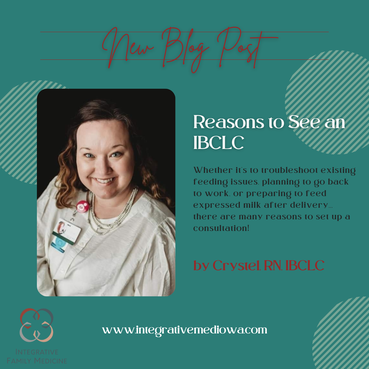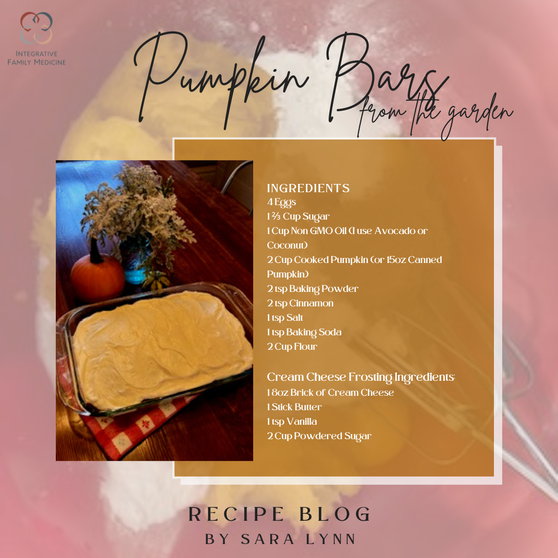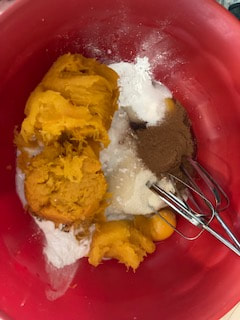|
Tears rolled down my cheeks as I sat in the front seat of my miniature van, parked in the Chik-Fil-A parking lot, baby bump nearly touching the steering wheel, I called my mom. “Mom, she’s a junkyard dog!” I said recalling the embarrassing scene I had just fled. The small 2 year old child strapped in her carseat behind me had just bit 4 people in less than 3 days. At this rate, she was surely on the path to Juvie.
I knew I had to intervene, but how? I felt like I couldn’t take her anywhere for fear that she would bare her teeth and the rest would be history. I sought out advice, most mom’s remembered their kids biting, but couldn’t remember how they stopped biting (funny how that works). Some moms suggested I bite her, so she knew how much it hurts (since I don’t want trouble from the law, I avoided this option). Others suggested I model nice interactions for her (she just ran away when I did this). The wisest moms of all shrugged it off and insisted she would outgrow it. So what did I do? I took a combination approach. I prompted her to bite her own arm. I pretended to bite my own arm at the same time. She was really excited at first, but soon, I had her full attention. That is when we talked about how important it is to use words to express yourself, instead of hurting people. Viola. She was a reformed 2 year old. What would I have done if the biting had persisted post intervention? I would have sought expert consultation that extends beyond my circle of mom friends. Here at IFM, we’re regular parents too (our children aren’t perfect), you can tell us the whoas going on in your family and we won’t judge. What we will do is listen. If necessary, we can refer you in house to our pediatric sensory specialist and our behavioral health specialist. So keep your chin up parents, IFM has your back! Sara Lynn, RN, BSN “If you don’t invest in your health, no one else will.”
0 Comments
How Diabetes and Weight Gain Are RelatedThis month’s blog is focused on diabetes awareness so I will be addressing this condition and how it relates to weight gain. I will be primarily focusing on Type 2 diabetes as it relates to weight gain much more so than Type 1. So when I use the term “diabetes,” I am referring to Type 2 and not Type 1.
Type 2 diabetes simply means insulin resistance. What does insulin do? Insulin is a hormone secreted by the beta cells of our pancreas in response to eating food. Most food, when absorbed, gets converted into various forms of simplified, broken-down sugars. These sugars are meant to be used as an energy source for muscles, liver, brain, etc. Insulin is the hormone that gets the blood sugar into these organs’ cells. Diabetes occurs when there is dysfunction in the hormone receptors on the cells of our organs making it difficult for the body to maintain a healthy level of blood sugar. The body responds to this by secreting more insulin to get the job done which ultimately perpetuates the problem. I equate it to hitting your car brakes harder and harder to make them work until they just simply don’t which is disastrous. Once your body has trouble balancing your blood sugar levels, an autoimmune reaction occurs because of this accumulation. These autoimmune chemicals then react with various parts of your body leading to nerve damage in your extremities, eyes, heart, stomach, brain and more central nerves that control your balance. These also damage the vascular walls throughout your body putting you at risk for heart disease, perivascular disease, and stroke. The longer and more severe diabetes is, the worse the risk is. What does weight gain have to do with Type 2 diabetes? Well there is no simple answer to this as we are still investigating the exact mechanisms but I will do my best to relay what we think we know. There is a certain time when, as you gain weight, that your fat cells become dysfunctional themselves. Dysfunction breeds an inflammatory response. Specifically, these dysfunctional fat cells promote pro-inflammatory macrophages in response to fat cell death, low oxygen levels inside the fat cells, and other dysfunctional processes. The cells then secrete pro-inflammatory chemicals lead to a decrease in insulin receptors on cells along with other similar receptors that regulate blood sugar levels as well as promote dysfunction of current insulin and other blood sugar receptors. That is the basic concept with no need for further in-depth discussion as the point of knowing this to help you understand that as a person gains weight, so too does one’s chance of developing diabetes. Thankfully we now have options to reverse this course and return you back to your normal state! Of course, the first and most obvious answer to this problem is a good healthy balanced diet. Specifically, when it comes to lowering your diabetes risk or simply treating diabetes, you must consume foods that are of low glycemic index. These are foods that do not spike up your blood sugar after eating them. This consists of healthy options with natural sugars that are complex as well as in general low-carb food options. The healthy higher-carb food items contain more complex natural sugars that are harder to break down by the body’s digestive tract so less gets absorbed over that time. Versus those sweets and snacks we like contain added sugars which are simple already-broken-down sugars which are all readily absorbed leading to a greater spike in your body’s blood sugar levels which then demand a higher amount of insulin secretion ultimately leading to weight gain and insulin resistance. If one is seeking medication to help cure them of diabetes, consider the GLP-1 agonists class. Examples of these include Ozempic, Mounjaro, Wegovy, Saxenda, Trulicity. These work by countering your “hunger-hormones” and promote increased insulin sensitivity. These combined with another class of medication called the SGLT-2 inhibitors are very good at not only getting your blood sugars under control but also help you to lose weight in the process. The idea behind these medications is to not only fix the current diabetes problem but to hopefully help one in negating one of the main causes behind diabetes which is weight gain. For those on insulin therapy, these medications will not only help much more than insulin but it is always my goal for my patients to wean off their insulin to promote further weight loss. Insulin, as a medicine you give yourself, leads to weight gain as well. This is because the levels of this hormone are not as carefully regulated since you are giving insulin on top of your natural production. Weaning off helps the weight loss process. The ultimate idea of these medicines is to be on them as long as the increased weight continues to put you at risk. Once your weight is at a healthy level, then we can start to wean off these medicines themselves as the hope is now you can control everything with diet and exercise alone. I hope that this blog has been good in helping you to understand diabetes and how it relates to weight gain. There are of course other causes behind Type 2 diabetes and not just weight alone but this is an area that we can control ourselves by making the necessary lifestyle changes we know we all need to make. Remember that even a mild weight gain can increase your risk of diabetes so do take care in managing your appetites and attachments to certain foods you know are not good for you. If you’re ready to take the next step in attaining greater wellness, schedule a weight loss appointment with me, I’d love to accompany you on this journey, and so would our Health Coach Kala. Stephen Hoelscher, MD, Board Certified in Internal Medicine, Obesity, and Weight Loss  1. Prenatal breastfeeding education: An IBCLC can help identify any potential issues that would complicate breastfeeding and review any advanced questions and concerns that you may have. She will cover what to expect prior to delivery, the golden hour, the first few days after birth, and may cover other topics; such as using a breast pump, depending upon what you want to know! 2. Dealing with breastfeeding issues: An IBCLC can assist with lactation difficulties, such as poor latching or sucking, perceived low milk supply, relactation, induced lactation, breastfeeding multiples, damaged nipples, incorrect pump flange sizes, or a fussy baby. 3. When a mother plans to return to work, an IBCLC can address questions about pumping, milk storage, and your rights. 4. General support: An IBCLC is that shoulder to lean on and someone to give you gentle guidance, especially in a group setting. A great support system significantly helps mothers reach their personal breastfeeding goals. 5. Pump questions Discuss pump usage, pump settings, flange fitting, pump filter use, and milk storage. 6. Bottle feeding issues Poor tongue use, poor sucking, infant weight loss, transitioning to combination feeding It’s a common joke these days that people plan their Thanksgiving outfits around how stretchy the waist band of their pants are. What’s not as funny is the difficult emotions many people face when seated at the dinner table, let alone seated around lots of family members. The holidays are filled with memories, family, favorite dishes, and many times guilt and uncomfortable emotions.
As a health coach, I always encourage my clients to focus on what they can control. Sometimes in hard settings, that means just focusing on controlling our breath. In holiday settings, this many times looks like bringing their own “healthier” option as a side dish. Maybe meeting a basic hydration goal before an event or party. Practicing staying sober or saying “no” to an offer we don’t feel inclined to fulfill. Not having a super restrictive mindset but simply limiting the favorite once a year treats and heavier dishes. Many times restrictions can lead to binging. Know yourself and your personality though, will that “taste” or just small spoonful lead to greater cravings than if you just avoided the dessert table all together? Allowing yourself to feel the bigger emotions that come up through this season is important. This leads to placing our focus outside of food and material items. A lot of emphasis is placed on the foods that bring us together or the gifts that will no doubt bring you all the peace in the world (yeah right). News flash, that piece of pie and that really great Black Friday Deal (on that thing you didn’t know you needed until it went on sale) will not bring you true contentment or joy. Contentment and joy come from living with what you have, right where you are. Even if right where you are isn’t exactly where you want to be. What are the things you are going to shift your focus to this holiday season? When I was a little kid, I loved when Fall rolled around. I’d be grocery shopping with my mom and we’d carefully pick out cans of Libby’s canned pumpkin off the freshly stocked seasonal end caps. I knew that those cans of pumpkin would be turned into something delightful that would certainly be shared with the company. I loved having company over, still do. Flash forward to 2009, the year of the pumpkin shortage. Canned pumpkin was nowhere to be found. Sure we’re used to this now with the supply chain issues and what have you, but in 2009 this caused an uproar. My friend's grandma saved the day when she cooked me a pumpkin and it came delivered in a mason jar. How did she do it? I wondered to myself. Well, I’ve learned a lot since 2009 and I’ll be darned if I’m forced to go without pumpkin desserts. This year my pie pumpkins didn’t survive. Raccoon? Deer? Rabbits? Mower? No one is fessing up, so it's a good thing our very own Alyssa at IFM had a stellar pumpkin crop this year. She knew just who to share with- me. So, let me show you how to take those fall pie pumpkins you've been decorating your house with, and turn them into something edible. First, wash the pumpkins thoroughly with warm water and dish soap. Since they grow on the ground, its just a good practice. Then cut them in half with a sharp knife and scrape out the seeds. Seeds can be saved for baking. Then place them cut side down in a baking dish with an inch or so of water. Bake at 400 degrees until soft. When the pumpkin is soft, let it cool slightly and scoop out the orange flesh, avoiding the skin Your cooked pumpkin can then be mashed by hand or run through a food processor to smooth it. I’ve found that the food processor is helpful if you intend on making a pie or soup. For coffee cakes or bars- hand mashing works just fine. Excess pumpkin can be frozen to use later. Let's turn that orange mash into some pumpkin bars, here’s my mom’s recipe that she’s been making since I was little. Batter Ingredients: 4 Eggs 1 ⅔ Cup Sugar 1 Cup Non GMO Oil (I use Avocado or Coconut) 2 Cup Cooked Pumpkin (or 15oz Canned Pumpkin) 2 tsp Baking Powder 2 tsp Cinnamon 1 tsp Salt 1 tsp Baking Soda 2 Cup Flour Cream Cheese Frosting Ingredients: 1 8oz Brick of Cream Cheese 1 Stick Butter 1 tsp Vanilla 2 Cup Powdered Sugar Directions: Preheat oven to 350 degrees and grease an 8in x 12in baking dish. Beat together the eggs, sugar, oil, pumpkin, baking powder, cinnamon, salt, and baking soda with an electric mixer. Sir the flour in by hand. Spread the batter evenly into greased baking dish. Bake for 25-30 minutes at 350 degrees, until a toothpick inserted in the center comes out with only a few crumbs. To make frosting, beat all ingredients together with an electric mixer until smooth. Cool the bars and frost with cream cheese frosting. You’ll be amazed at how simple it is to cook with fresh pumpkin instead of using store bought canned pumpkin. It really does taste better and is a fun activity to do with children, showing them where their food comes from. Sara Lynn, RN, BSN
“If you don’t invest in your health, no one else will. “ |
Blog Info
Archives
June 2024
Categories
All
|
|
Visit our Locations
IFM | West Des Moines 475 S. 50th St., Suite 600 West Des Moines, IA, 50265 *Temporarily Closed* IFM | Ankeny 207 NE Delaware Ave. Suite 20 Ankeny, IA 50021 |
Office HoursMonday 9:00 a.m. - 5:00 p.m. Tuesday 9:00 a.m. - 5:00 p.m. Wednesday 9:00 a.m. - 5:00 p.m. Thursday 9:00 a.m. - 5:00 p.m. Friday by appointment. Sat & Sun Closed |
© 2024 Integrative Family Medicine of Iowa, PLLC.
All rights reserved.
All rights reserved.











 RSS Feed
RSS Feed

